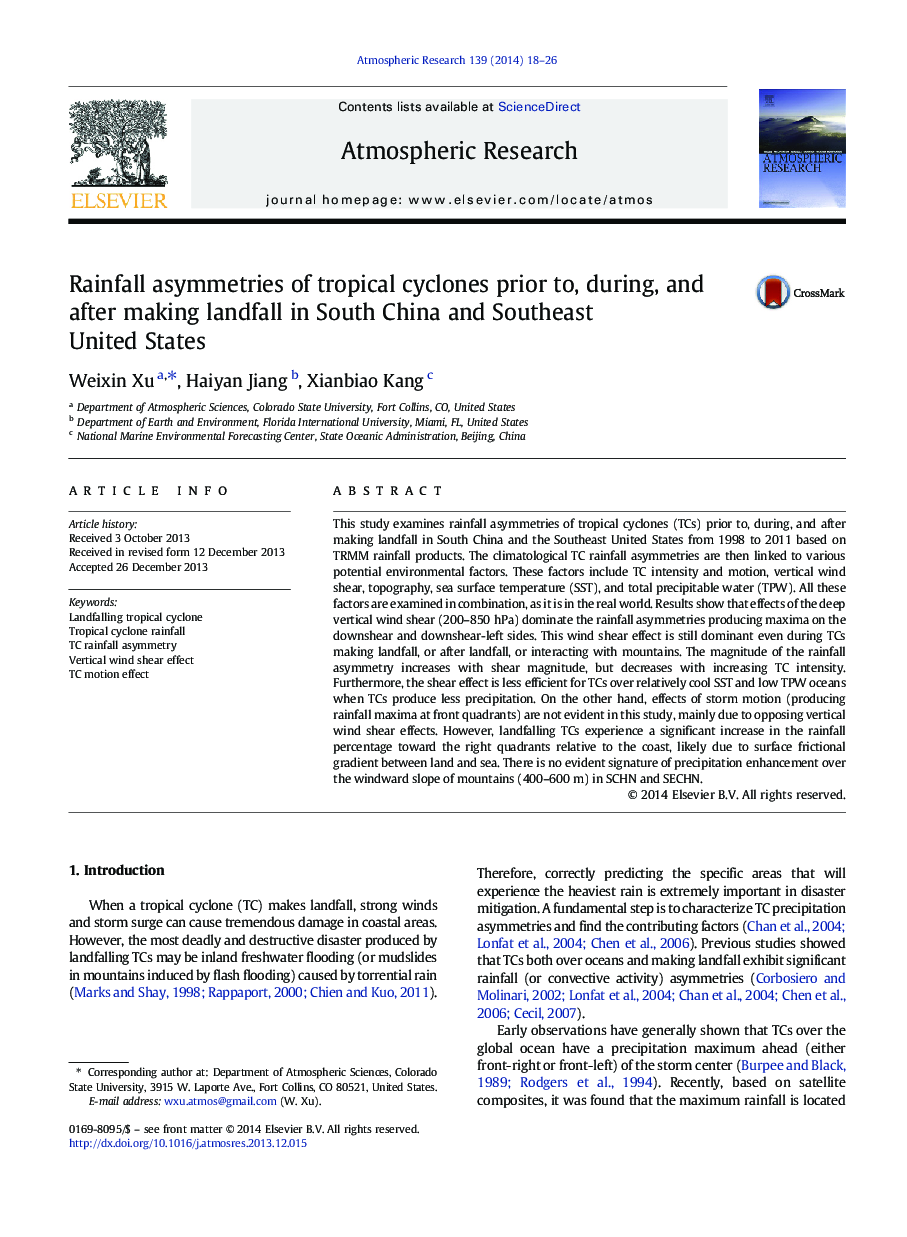| کد مقاله | کد نشریه | سال انتشار | مقاله انگلیسی | نسخه تمام متن |
|---|---|---|---|---|
| 4449952 | 1620531 | 2014 | 9 صفحه PDF | دانلود رایگان |
• Wind shear effect dominates the TC rainfall asymmetry under most situations.
• Landfall TCs have significant rainfall increased on the right side of the coast.
• SST and TPW slightly influence the magnitude of TC rainfall asymmetry.
This study examines rainfall asymmetries of tropical cyclones (TCs) prior to, during, and after making landfall in South China and the Southeast United States from 1998 to 2011 based on TRMM rainfall products. The climatological TC rainfall asymmetries are then linked to various potential environmental factors. These factors include TC intensity and motion, vertical wind shear, topography, sea surface temperature (SST), and total precipitable water (TPW). All these factors are examined in combination, as it is in the real world. Results show that effects of the deep vertical wind shear (200–850 hPa) dominate the rainfall asymmetries producing maxima on the downshear and downshear-left sides. This wind shear effect is still dominant even during TCs making landfall, or after landfall, or interacting with mountains. The magnitude of the rainfall asymmetry increases with shear magnitude, but decreases with increasing TC intensity. Furthermore, the shear effect is less efficient for TCs over relatively cool SST and low TPW oceans when TCs produce less precipitation. On the other hand, effects of storm motion (producing rainfall maxima at front quadrants) are not evident in this study, mainly due to opposing vertical wind shear effects. However, landfalling TCs experience a significant increase in the rainfall percentage toward the right quadrants relative to the coast, likely due to surface frictional gradient between land and sea. There is no evident signature of precipitation enhancement over the windward slope of mountains (400–600 m) in SCHN and SECHN.
Journal: Atmospheric Research - Volume 139, 15 March 2014, Pages 18–26
